I’m traveling along narrow cobblestone streets flanked on both sides by rows of adobe buildings washed with bright yellow and accented with white trim and large ceramic pots brimming with colorful blooms. My mode of transportation is a white “coche Victoria” (or calesa) pulled by a mule named Dolly, garlanded with flowers and a hat set jauntily atop her head. The Izamal equivalent of Uber, Dolly is one of many flower-strewn burros and mules pulling calesas throughout Izamal, a Pueblo Mágico or Magic Town in the Yucatán Peninsula. I, alas, am only a visitor here for a few days. I’ve just arrived but I already know my stay won’t be long enough.
We drove from Merida, that marvelous coastal city with its historic mansions, broad boulevards, boutiques, eclectic restaurants and—if you want it—non-stop activity. Izamal, so much smaller, is restful after the bustle but that doesn’t mean we don’t have a list of things to do.
Our first stop is lunch at Kinich where we follow owner Miriam Azcorra to our table already set with large pitchers of ice cold Jamaica flower water and horchata, the sweet rice drink I so love. Growing up, this was Azcorra’s home, the place where her grandmother taught her to cook many of the dishes traditional to the Yucatán. Now, those recipes are part of the menu and popular enough to attract not only national but international attention, including that of cookbook author Pati Jinich, whose long-running show, Pati’s Mexican Table, garners more than 28 million views. She featured Kinich’s recipe for Mayan Poc Chuc on her blog.
Kinich is a big sprawling place and its menu dedicated to the foods of the region. And though I’m sure the kitchen is modern–after all, we all immediately get wireless on our phones and everyone begins snapping photos and sending them home, Kinich celebrates Yucatan culinary traditions. Towards the back of the dining room, a palapa-covered replica of a choza or Mayan kitchen has been set up and it is inside here that Nancy Mukul, wearing a huipil, the intricately embroidered Mayan dress (how do these dresses stay so clean when the wearers are cooking?) pats chunks of masa into wafer-thin, perfectly round circles which she then cooks on a wood-burning comal.
I watch as several cloth-lined baskets are filled with these freshly made tortillas and follow them back to our table. There our servers have already set large platters of empanadas stuffed with chaya and Gouda cheese, shredded venison and poc chuc, the pork dish cooked in a pibil accompanied with slices of bitter oranges to squeeze on top of the meat after we spoon it into the tortillas I just watched Makul make.
In many ways, Kinich (the name, Azcorra tells me, is from Kin Ich Kak Mo, Mayan for “eye of the sun of the firebird”) reflects the essence of Izamal—a blend of 16th and 21st centuries, and a homage to the town’s heritage without eschewing modern amenities.
In front of the home and studio of jeweler Esteban Aban Montejo, our driver pulls Dolly to a stop and we disembark. Montejo is at the door, taking us past the glass display cases filled with a selection of rings, necklaces, earrings, and bracelets made from the nuts of the cocoyol trees, and through a room where the machines for shaping metals are housed, out into the backyard. Under the cluster of cocoyol trees, Montejo shows us how they use the nuts which must be aged for 30 years, along with henequen thorns, to make their jewelry. It’s a long process and the polished nuts are set in intricate filigree settings creating dazzling jewelry and earning the family the Banamex Cultural Promotion Grand Master of Popular Art award.
Dolly’s hooves clip clop on the street as we head back to the center of town which is dominated by the San Antonio de Padua Convent, begun back in 1535 but not to be finished for another 26 years. Like many Colonial era cities and towns in Mexico during the years of Spanish domination, the architecture incorporates accents of Moorish design, such as the arched doors and windows, muqarnas or honeycombed vaulted ceilings, flying buttresses and colonnades. A vast edifice, we climb the stairs and roam across the wide ramparts said to be the second largest in the world after St. Peter’s Basilica at the Vatican.
The convent looks over the town’s Mercado, where we can see the first streaks of an orange and pink sunset. It’s busy with other calesas, children playing, and vendors selling corn on the cob slathered with mayonnaise and chili powder and, my favorite, marquesitas. I watch as a vendor makes these sweet treats by dipping a ladle into creamy batter and pouring it, pancake like, onto a hot griddle. Flipping the thin crepe so it browns evenly on both sides, he then rolls it around a cylindrical shaped piece of wood. Then, sliding it from the cylinder, it is stuffed with a combination, according to the buyer’s whim, of shredded Gouda cheese, cajeta (goat’s milk caramel) and Nutella, or all of the above. I chose the latter.
Walking along with my marquesita wrapped in wax paper, a peek through an open doorway into the interior reveals a vividly painted deep pink and blue barbershop. Everyone else walks on, but I’m determined to enter. The barber doesn’t speak English and I don’t speak Spanish, but he understands that I want to look around. There’s his vintage chair made of wood and cane with a treadle footrest, an old fashioned grinding wheel with a hand turn and antique cabinets. On one wall, an assortment of framed newspaper articles tells the story of his business.
I can read enough Spanish to learn his name is Fernando Esquivel Lugo; he is 92 years old and has been working as a barber since the age of nine. Quite a life, I think. Thanking him for the tour, I join my friends gathered at the rooftop restaurant of Hotel Rinconada del Convento, order a cocktail, and watch as the sun continues its descent over the convent and the yellow city beyond. Down below, a large bus pulls up in front. No more Dolly, it’s time to go home.
Editor’s Note: In several states of Mexico, including Yucatán, horse-drawn carriages are increasingly being replaced by motorized ones in the interests of animal welfare.

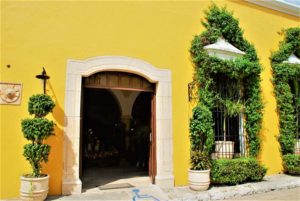
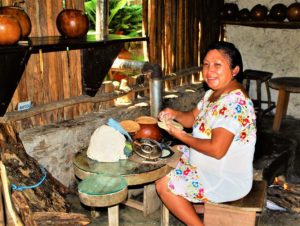
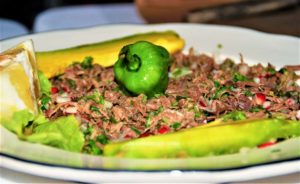
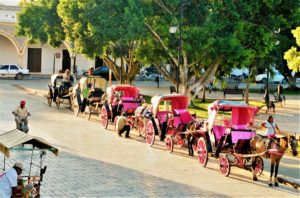
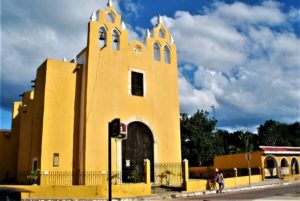
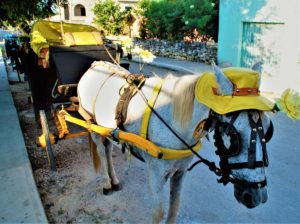
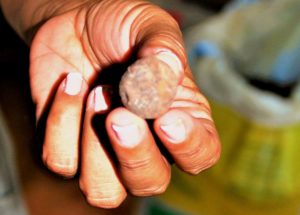
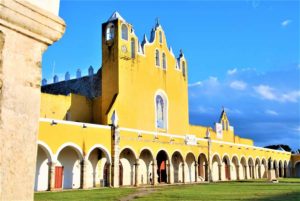
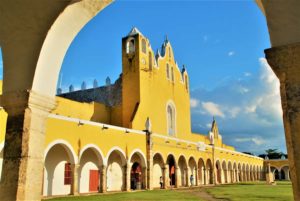
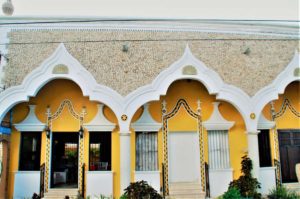
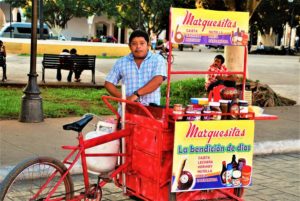
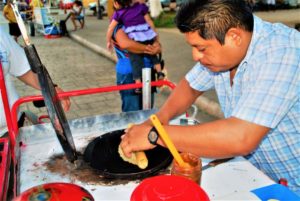
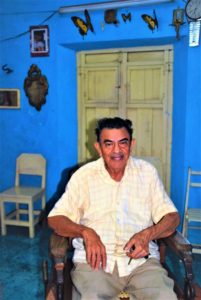
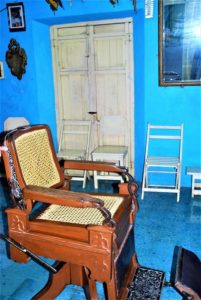
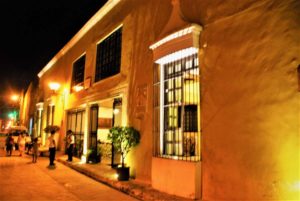
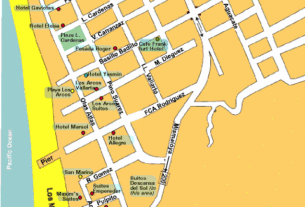
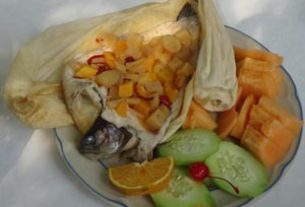
This comment – and a reply – has been moved to https://www.mexconnect.com/articles/2436-isthmus-style-corn-bread-pan-de-elote-del-istmo/#comment-605